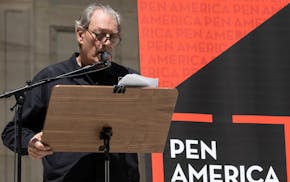It's definitely more complicated than it's ever been," said Tim Palmer, managing director at Minneapolis-based Nuveen Investments. Palmer was describing the quandary income-hungry investors face in the current unprecedented six-year run of historically low interest rates.
For much of the past 25 years, investors could purchase highly liquid risk-free U.S. government securities and count on positive real returns while generating current income. But since the Federal Reserve dropped its key overnight federal funds rate to near zero at the depths of the Great Recession and held it there, retirees and other investors who rely on their portfolios for interest and dividend income have struggled in their search for yield.
"Risk-free is now priced like risk-free," Palmer said, meaning income-seeking investors need to look beyond U.S. treasuries. Palmer, who manages the $1.1 billion Strategic Income Fund, uses words like "nimble," "flexible" and "opportunistic" in describing the appropriate investment approach, saying investors need to "take some risk."
But investors also need to be aware of the kinds of risks they are taking on.
Most fixed-income investors think about three kinds of risk. The first is the risk that a corporation or government will default and stop paying interest on its debt. That's easy enough to understand, but hard to predict, which is why "junk bonds" viewed as more risky than AAA-rated debt pay a higher coupon.
The second kind of risk, interest rate risk, is more complicated. In the world of fixed income investing, bond prices have an inverse relationship to interest rates, which means when interest rates rise, the price of the underlying bond falls. As the market anticipates the Fed beginning to loosen interest rates later this year, interest rate risk enters into investor thinking as well.
Currency risk is important for investors holding international debt, highlighted by the recent rapid rise of the dollar against major global currencies.
Palmer's approach to fixed income investing is to spread risk across multiple classes of debt securities. Palmer is diversifying into both high-quality and high-yield corporate debt, as well as international debt and some preferred stocks that are a hybrid of debt and equity securities.
Some of his largest holdings include high-quality corporate debt from Goldman Sachs and Bank of America. In addition, he holds government debt from South Africa and Mexico but said he is avoiding Brazil, Australia and New Zealand while "walking the tightrope" managing currency risk.
Ninety percent of a fixed-income investor's return comes from income not principal, Palmer pointed out, so if investors do their homework they should not get overly concerned "about every little wiggle in Fed policy."
Ben Marks, founder and CEO at Minnetonka-based Marks Group Wealth Management, is taking a different approach to help his clients reach their income goals. Marks thinks the risks of reaching for yield in fixed-income instruments are "underappreciated by investors." Locking into long-duration bonds or preferred stocks increases exposure to interest-rate risk while taking positions in high-yield junk bonds increases credit or default risk, he said.
He thinks the U.S. economic recovery will continue and the global economy will follow, creating upward pressure on interest rates. Urged by a client to develop a less risky approach to generating income in that environment, Marks, whose firm manages $650 million in assets, launched an equity income offering in January.
Instead of looking for income from debt securities, Marks focuses on investing in common stocks paying high dividends. While cautioning that stocks with a high dividend yield are subject to some interest rate risk, Marks seeks to offset that by focusing on companies whose underlying businesses, and stock, are likely to do well as interest rates rise with an improving economy.
Constructing a portfolio of stocks with a high current yield will naturally tend to concentrate on a few sectors, he said.
Marks views private equity firms such as Blackstone Group (BX) and Kohlberg Kravis Roberts (KKR) as "very well situated to be beneficiaries of an improving economy." He also likes some energy sector stocks beaten down because of low oil prices, BP PLC (BP) and pipeline company Williams Partners LP (WPZ).
Marks avoids traditional high-yielding stocks such as electric utilities and tobacco companies because their underlying businesses are not as likely to benefit from an improving economy. Those stocks "tend to act more like a bond when we start seeing rising interest rates," he said.
Marks said the equity income portfolio strategy has attracted $30 million in investments, with a stated target of earning a 5 percent yield before fees.

Ramstad: Gustavus president Bergman calls aid glitch a 'massive disruption'

Writing is hard work, with the goal of making it look easy



